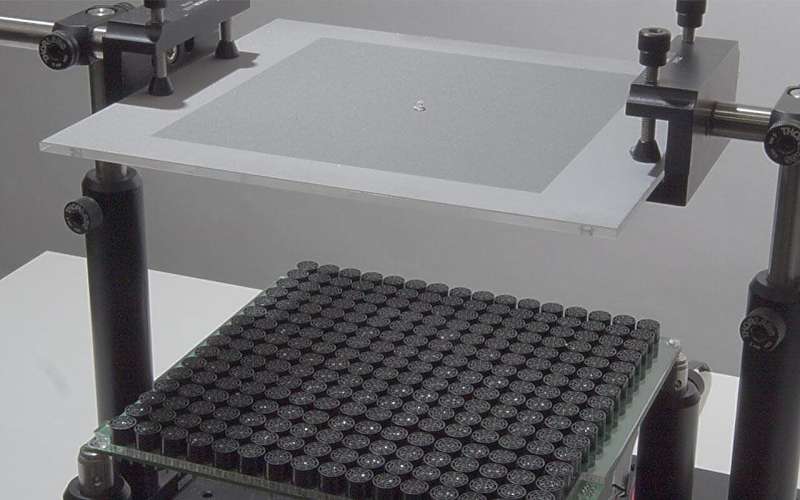This article has been reviewed according to Science X's editorial process and policies. Editors have highlighted the following attributes while ensuring the content's credibility:
fact-checked
peer-reviewed publication
trusted source
proofread
Ultrasound-based microfluidic manipulation platform for airborne droplets

As science races toward automation and quick experiments, it is sometimes required to concurrently handle small amounts of liquids (droplets), from picoliters to microliters. Moreover, droplet jumping is required when transporting droplets to distantly positioned devices or containers. However, the digital microfluidic technology, which manipulates droplets on a surface, is constrained to a maximum height of approximately 5 mm.
Herein, researchers designed a new microfluidic platform that harnesses the remote force of ultrasound, known as the acoustic radiation force, to manipulate droplets. They discovered that a hydrophobic mesh can support droplets while allowing sound waves to pass through them. The research is published in the journal PNAS Nexus.
Notably, they found that droplets are drawn to areas with high sound pressures, even in the air. This enables manipulation of droplets on the mesh using ultrasonic waves, allowing droplet jump heights of up to 128 mm. Moreover, the direction of the jump can be controlled, making it possible to move droplets to a neighboring device or another level.
In addition, droplets can be moved horizontally, merged, and split, which are essential functions for any digital microfluidic platform. To illustrate the potential of the platform in scientific experiments, the Suzuki-Miyaura cross-coupling reaction was performed on this platform and its suitability for biological experiments was also demonstrated.
The findings from this research could pave the way for the development of three-dimensional displays and automated experimental systems.
More information: Yusuke Koroyasu et al, Microfluidic platform using focused ultrasound passing through hydrophobic meshes with jump availability, PNAS Nexus (2023). DOI: 10.1093/pnasnexus/pgad207
Journal information: PNAS Nexus
Provided by University of Tsukuba





















